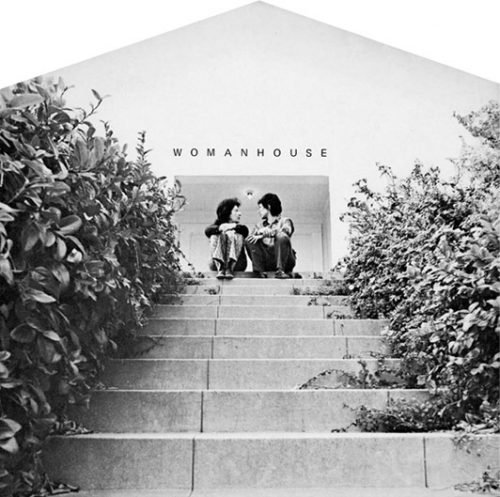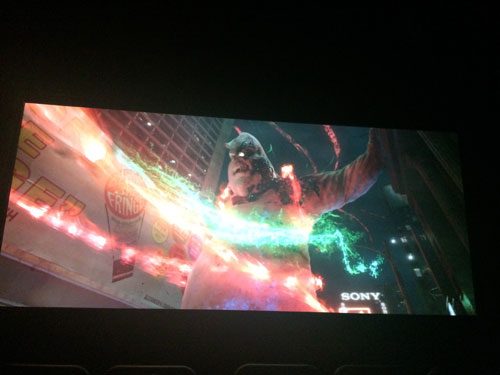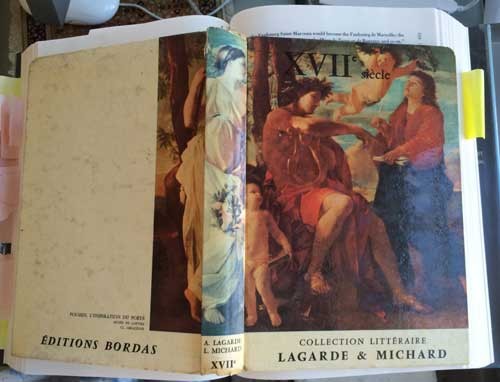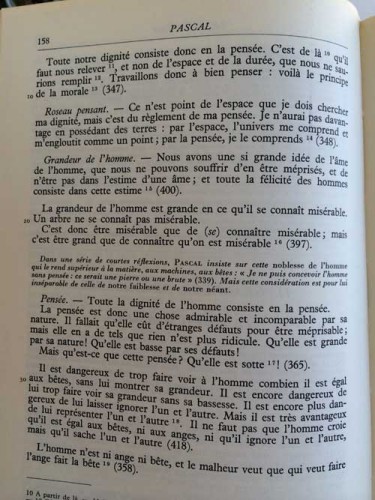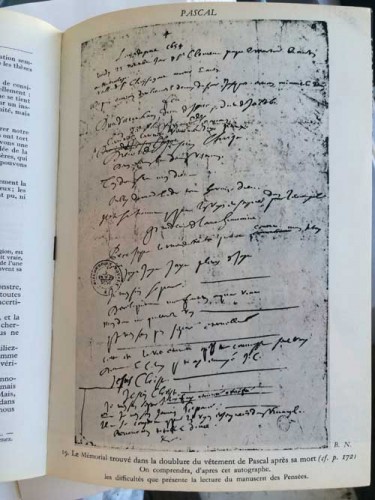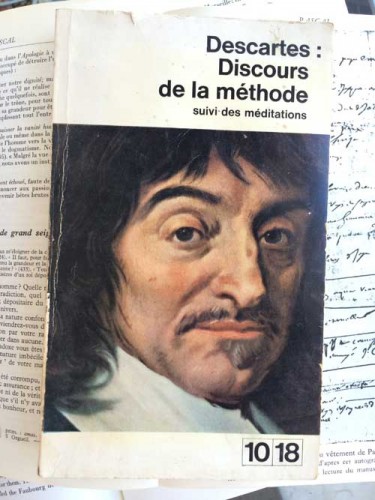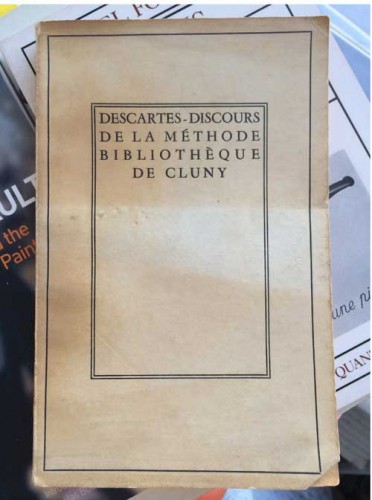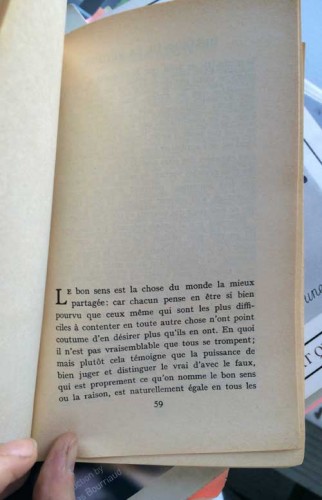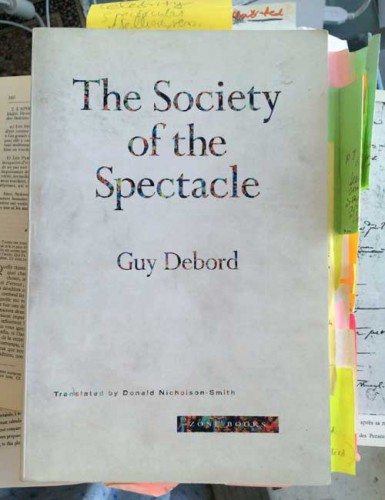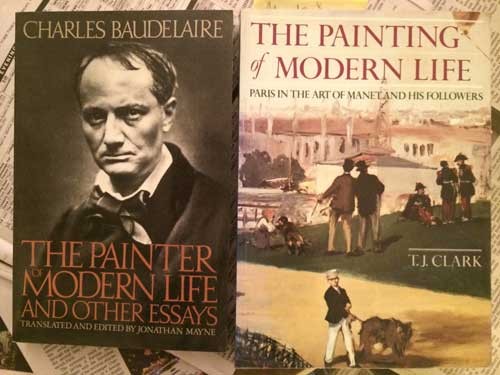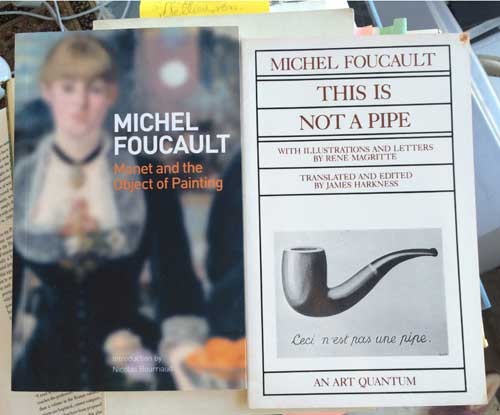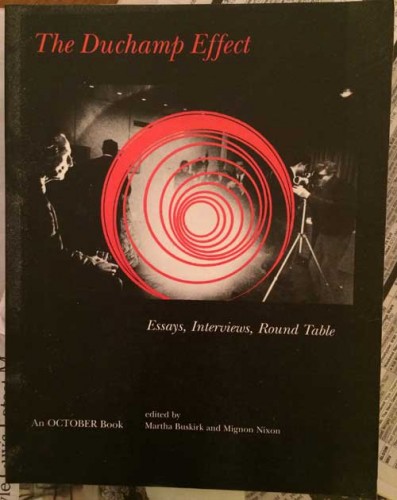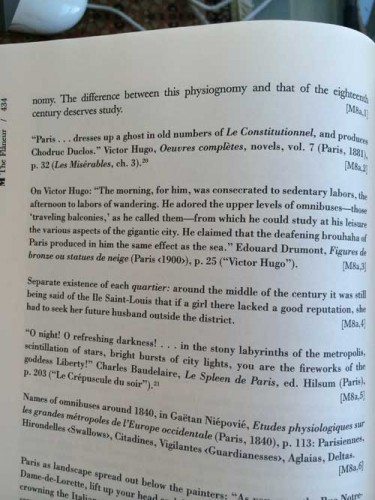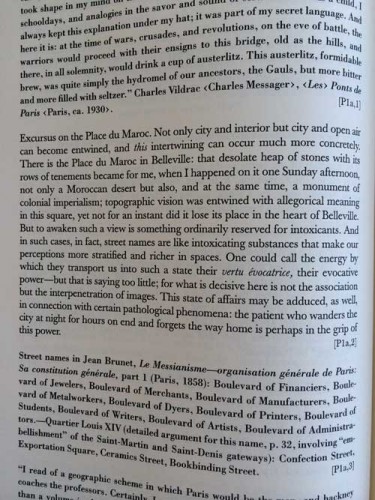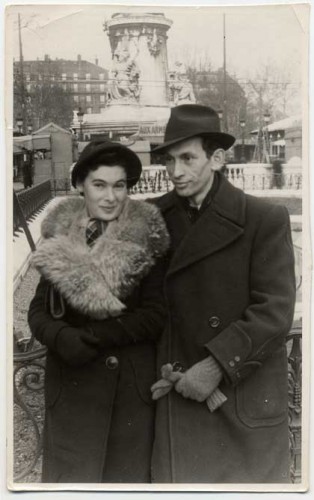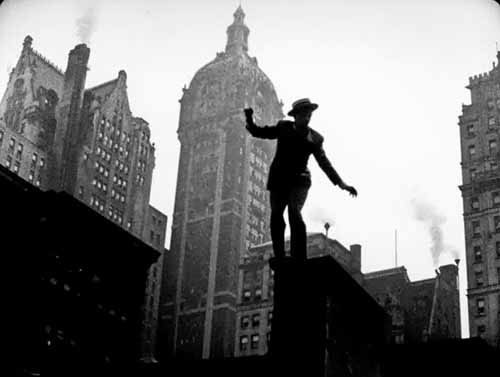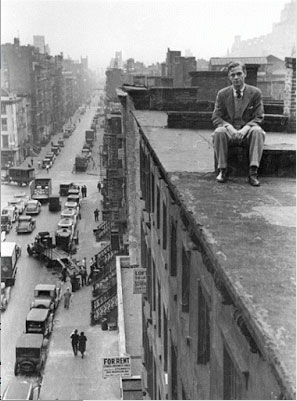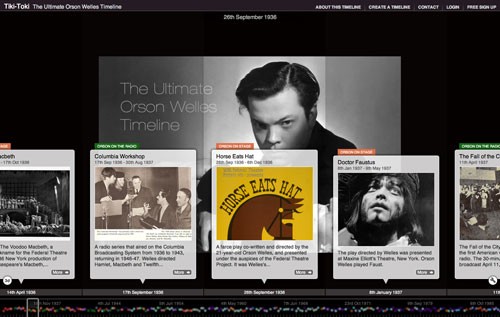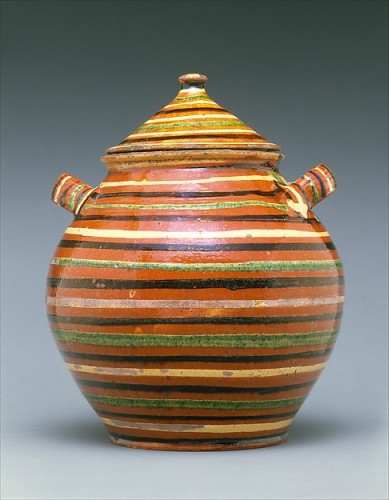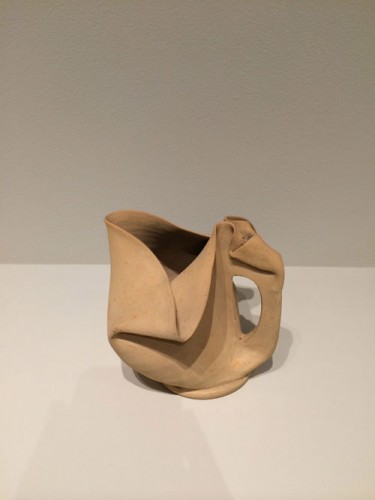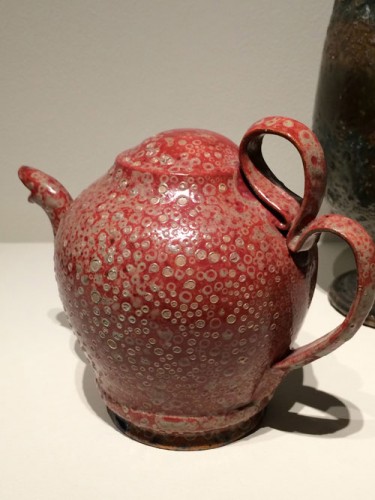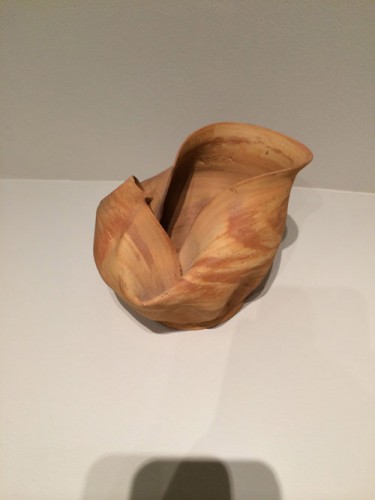It took a while for the full implications of a small item I read in Robin Pogrebin’s “Inside Art” column in the Times earlier this month to sink in, “Judy Chicago Does TV.” The first sentence–“An artist isn’t typically rediscovered at 77”–fit into a category of historicization of women artists that I have commented on frequently, as recently as in a blog post here a few days ago. The article continued, “But that seems to be what’s happening to Judy Chicago of “The Dinner Party” fame, who is now going to be represented by Salon 94.” That Judy Chicago, whose work “The Dinner Party” occupies the most square footage of museum real estate devoted to a woman artist that I know of, at least in the United States, and who has been in the public eye and in feminist history for nearly 50 years, is one of these older women artists who are being “rediscovered” struck me as odd, but, OK, I had noticed recently that she has been showing in Europe, and so perhaps “rediscovery” translates here to that fact that a certain layer of the European art marketeriat is paying attention to her for perhaps the first time.
However the core of my dismay centered on the next paragraph, “Jill Soloway, creator of the acclaimed television series “Transparent,” is also making an Amazon series based on Womanhouse, the 1972 feminist art space that Ms. Chicago organized with Miriam Schapiro.”
Some younger women artists I know posted this news on Facebook saying how “AMAZING” it is. I appreciate their enthusiasm for this signal artwork of early seventies American feminist art, for Jill Soloway as someone focusing on pressing gender and trans issues in her popular series Transparent, and in general for anything feminist to get attention in popular culture.
But, I beg to differ: I was a participant of the project Womanhouse and I find the prospect of a dramatization of it something between violation and farce.
This blog post is to try to examine my own reaction and, though I speak for myself, I write with knowledge of the reaction of a number of the other women who worked on Womanhouse, some of whom I quote below, which boils down to WTF.
First the inference of the article is that Judy Chicago is the principal advisor of this project, and therefore that it is her version of Womanhouse and her views and memories of the other participants that will dominate the narrative. That is disturbing. Why? There is no question that Chicago was the co-director with Miriam Schapiro of the CalArts Feminist Art Program and Womanhouse from 1971-1972. Chicago had created/taught/directed the first Feminist Art Program the year before at Fresno State. I highly recommend the section of Gail Levin’s biography Becoming Judy Chicago: A Biography of the Artist that covers that year of Chicago’s most radical pedagogical experiment, it is inspiring and provocative, and having worked with her and Schapiro in the CalArts program I can vouch for the fact that although our program was pretty radical, the Fresno program was ten times more so. Thus the importance of that Judy Chicago is absolutely paramount. Nevertheless, the idea for Womanhouse came from art historian Paula Harper, and was driven as much by Miriam Schapiro’s ideas, goals, dreams, aesthetic views, and ability to proselitize and fundraise for the project as by Judy’s vision for it. Also, and of course paramount to my own sense of violation, Womanhouse was a collaborative project with 20 young women students from the Program and three or four other unaffiliated women artists from the LA community working on installations, paintings, and performances, emerging from consciousness raising sessions and discussions. In a short, difficult, and intense period of time everyone involved worked to bring the project Womanhouse to fruition for public viewing in the month of February 1972.
The students who participated in the CalArts Feminist Art Program and Womanhouse included some of the women who had worked with Chicago in Fresno, the rest were women who had self-selected to join the CalArts FAP in the fall of 1971. This was a major decision for a number of reasons. First, the program was exclusionary–only women students. The program was given a very large shared studio space with a locked door–that women held significant real estate within the school was so important institutionally. The fact that the program was exclusionary meant that one’s fellow students were only women, which not all young women would find attractive socially. It also at first meant that one was somewhat cut off from the rest of the student body and faculty. Second, it was a major decision because it was not just a class, it was a program, an experimental educational program within an experimental art school, so it represented a major commitment of time, energy, political identification, and personal allegiance as well as a challenge to established views far greater than any of the other ways of challenging art that were operative at the school at that time. Being in the program was a radical statement, it was a public declaration of identification with a political movement, Women’s Liberation or feminism, which at that particular moment was gaining importance across the country but which still was an identification with social risk.
Thus the women who chose to be in the program were unusual, every one of us, even the ones who were shy and quiet or the ones barely sane enough to function. And we were doing all this while mostly very young. Who were we, why had we chosen to do this, how did we handle the pressure? Which ones of us went on to lives in the arts? And which ones contributed further to writing the history of Womanhouse? Does Jill Soloway know anything about this? I am told that she does a lot of research for her projects but not one of the original participants or, in the case of Schapiro, the executor of her estate, has been consulted or indeed heard a word about this project until the notice in the Times. And if Judy Chicago is her only source she won’t learn much of who we were and are and what we know, because Chicago of course was understandably focused on herself and her own significant struggles in the situation. One of the Womanhouse participants’ said that she thought they would only need two actresses, “Judy and ‘the girl’,” another’s fantasy is that in the series “Judy is a character and everyone else is portrayed out of focus.”
On Chicago’s website, her bio page does not mention either the CalArts Feminist Art Program or Womanhouse and her gallery of images tucks pictures of her much referenced and reproduced piece at Womanhouse, “Menstruation Bathroom,” into the bottom page section “Installations and Performances,” so it takes some work to find it. Further, since that time, Judy Chicago has not been an active participant in the many challenging directions that feminist art and theory has taken in the following decades: in fact she–her ideas and her work–was a major subject of, even a cause of, but not an active agent in the very divisive battles over essentialism that dominated feminist art discourse in the 1980s and more subtly ever since.
The little squib in the Times was vague about whether this Womanhouse based series is already in production or just in development. But, again, not a single woman associated with Womanhouse–and, with the exception of Schapiro, all of us are living–has been approached for our recollections and views and our engagements with that shared history or, for that matter, for what we might feel about this dramatization, how each one of us might balance pride in our participation in an important historical work with a sense of possessiveness or privacy about our experiences of it.
Second, it is very common in such dramatizations of real events and docudramas about famous people to focus on only a few characters that represent specific people. Thus, for example, if this Womanhouse series is an actual dramatization of the actual project Womanhouse, Soloway couldn’t get away with creating a composite character to stand in for Miriam Schapiro because she is a well documented historical figure, although some people in the know feel that Judy has done her best to erase Schapiro from the history. The struggles between the two women were visible at the time including in video documentation of the time. But it is their collaboration that creates that particular event in history. However, once past Mimi, it is likely that many of the rest of us would be lumped into generic composite characters. You know, the kind who hang around the great artist’s studio wearing period appropriate clothing and have one line, like “Pablo, that’s really a masterpiece.” In Gail Levin’s biography of Chicago, I believe I am referred to as “a strange girl from New York.”
Well, as it happens, I don’t see myself as a composite character: for example although probably I fit the bill more than I would like, I don’t think I’m the generic Jewish girl from New York. Since I hope Jill Soloway will see this text eventually, I’d just like to say that I happen to think that I’m a pretty unique and complex figure. Also, of the students who were in the CalArts Feminist Art Program and who worked on Womanhouse, I’m one of the ones who has become, with Faith Wilding, a historian of that time period. But the point is that each one of us was a specific and unique person–our choosing to be in the Feminist Art Program alone being evidence enough of that. That was one of the most important gifts of being part of that program and project, getting to know a number of exceptional and unique people with very different backgrounds from my own, but each with a perhaps atypical relation to her own history for having chosen to participate in a revolutionary program. If one is able to see Lynne Littman‘s 1972 KCET document Womanhouse is Not a Home in particular as well as the better known and distributed film by Johanna Demetrakas, Womanhouse, you get to hear many of the young student participants speak about their intentions and desires for their installations but not every woman is interviewed and anyway even that doesn’t give you the full information about each person’s background and what drew them to the FAP. Looking back I’m not sure any of us knew all about why each of us had joined up for though we learned a lot about each other since close friendships were formed and self-revelation in consciousness raising sessions was encouraged in the search for feminist subject matter; nevertheless there were also centrifugal forces that spun us apart, in the tumult of a small group and of a revolutionary moment.
That this was a revolutionary project and moment is embodied in the reaction of yet another of the Womanhouse participants: “it makes me think about how there is nothing that cannot be capitalized, commodified, and HBO-ized.”
Third, most people who find that something they lived through is the subject of a dramatization must feel quite bemused or perturbed by the strangeness of that experience, and by the knowledge that not even the greatest director can possibly recreate the truth of a particular moment in time. If, as a viewer, you yourself have not actually lived through the moment, you can enjoy it no matter how removed from historical veracity. Who hasn’t watched all kinds of preposterous actors play the Kennedys? Maybe even Jackie Kennedy secretly watched some of them. If you know anything about the time period of a dramatization of a historical moment, there is a sort of kick of watching both the characterizations and reconstructions as well as catching the inaccuracies, the compressions of narratives, and, yes the composite characters: Ed Harris’ Pollock, Selma Hayek’s Frida, and Margarethe von Trotta’s Hannah Arendt are very creditable examples of the genre, but there are always those moments that seem inauthentic, if you know anything about the subject, especially if the character is a composite type and not the depiction of a real person, however reductive and distorted.
Fourth, so really, if it turns out that I will be or have already been written in as myself, the character Mira Schor, age 21, who can play me? I realize that I am not much up on young women actresses at this point. Over twenty years ago I had a pretty good idea: in an envelope (currently lost) that I painted, in which I cast myself and the artists associated with a gallery I was represented by, I cast Judy Davis as myself, not that I look like Judy Davis but her characterization of George Sand in James Lapine’s 1991 film Impromptu (pure fiction at least if you look at the photograph of tubercular Frederick Chopin and compare to gorgeous young Hugh Grant, or photographs of plump plain swarthy middle-aged George Sand and compare her to slim Waspy Judy Davis but it was the Bette Davis impulse in Davis’s characterization that I responded to, the drive of intelligence and independence I associated myself with). But now, I can’t imagine. I sat with a young friend who ran through current actresses including everyone from the stars of Broad City to Emma Stone and, her first choice to play me, Kristen Stewart! Frankly I don’t see any of it. The best I can do is think of my admiration for some of the great comedians of our time–Tina Fey, Samantha Bee, Kristen Schaal, Jessica Williams. Yeah, make a composite of them, and I’ll accept that person + a little Semitic New York strangeness. This will have practically nothing to do with me, but at least I will enjoy the character.
Fifth, and most important, probably I am misunderstanding the whole thing: most likely this is a series that will be “based“ on Womanhouse, allowing for total fiction based on whatever research Soloway does and thereby handily preventing law suits. So perhaps some Semitic-looking actress portraying a scowling Jewish girl from New York or a sexy smart ass Jewish girl from New York or whatever works best for the ensemble of the plot line may float through. Perhaps imagination can create a character more cinematically interesting than my own complex self. And a Miriam Schapiro-like oppositional figure to the transformational radical pedagogue Judy Chicago-based heroine may perhaps be inserted to provide some necessary conflict. I can’t help thinking of all the survivor series, the “reality” shows that identify likeable and villainous characters for the gullible audience and that are so carefully edited and scripted to highlight the most conflict in order to maintain ratings.
The young women artists whose enthusiasm for feminism, which is so welcome, makes them look forward to this series as “AMAZING” will accept this fictionalization as reality because what other options would they have.
And why not applaud the whole thing because so few artworks by women artists are the subject of a television series or film? And, further, as an artist, I should trust in Soloway’s artistic vision and her narrative skill in re-imagining a very significant moment in the history of feminism and the American Women’s Liberation Movement–though, heads up, it really wasn’t much like that “Wimmin’s” festival in Transparent‘s Series 2 episode “Idlewild” although perhaps from the outside we were indeed just the younger versions of the women sitting around the campfire critiquing patriarchy. The casting and acting in Transparent are exemplary so why doubt that she would do a more than creditable job in representing Womanhouse?
Certainly I should recall, as a cautionary note to self, my understanding, shared by many others, that Miriam Schapiro’s desire for control of the narrative when working with potential biographers and documentarians (followed, sadly, by her later struggles with dementia) cost her in terms of historicization–for instance, Schapiro does not appear in Demetrakas’ film Womanhouse–allowing Chicago the historical field and the ground to be the one to influence this planned series on Womanhouse.
And it’s always important to remember the rule so succinctly articulated by John Ford at the end of The Man Who Shot Liberty Valance, when a reporter is given the choice between revealing the truth of an important part of the history of the West or sticking with the story as long told, “This is the West, sir. When the legend becomes fact, print the legend.” However, in that film, the whole story is a flashback, so we, the audience, know the legendary outcome before we learn the truth, and there is a kind of logic to the story, each of the two main protagonists “who shot Liberty Valance” is in a way a hero, so then a related ending occurs to me, of another Ford movie about the West, his 1948 Fort Apache: here the audience has experienced the story of the massacre caused by an arrogant and racist commanding officer diegetically–read Custer’s Last Stand seen from the critical point of view of US soldiers more experienced with and more respectful of their Native American enemy–so when at the end a reporter refers to the martinet as a hero, as depicted in a totally inaccurate famous painting of the event as reimagined by the winning side of history, the hero dutifully but ironically chooses not to correct the “legend,” but the unfairness is stinging.
But you never know, perhaps I will in the end find myself grinning at the contact glow of secondary fame of being in any way associated with a television series by an Emmy Award winning producer-director. Maybe the dramatization will eventually replace my own fading memories of what actually happened and what it was actually like and what I thought of it at the time. And given the simulacral aspects of contemporary life, where entertainment trumps all, that aphasic self will be a totally representative, contemporary, composite character.
***
I originally had planned to put a bibliography and filmography on Womanhouse here at the end of this text, but why be a goody goody? Thus I have not included any such references or pictures despite being sorely tempted to do so, except for a picture of the original catalogue.
